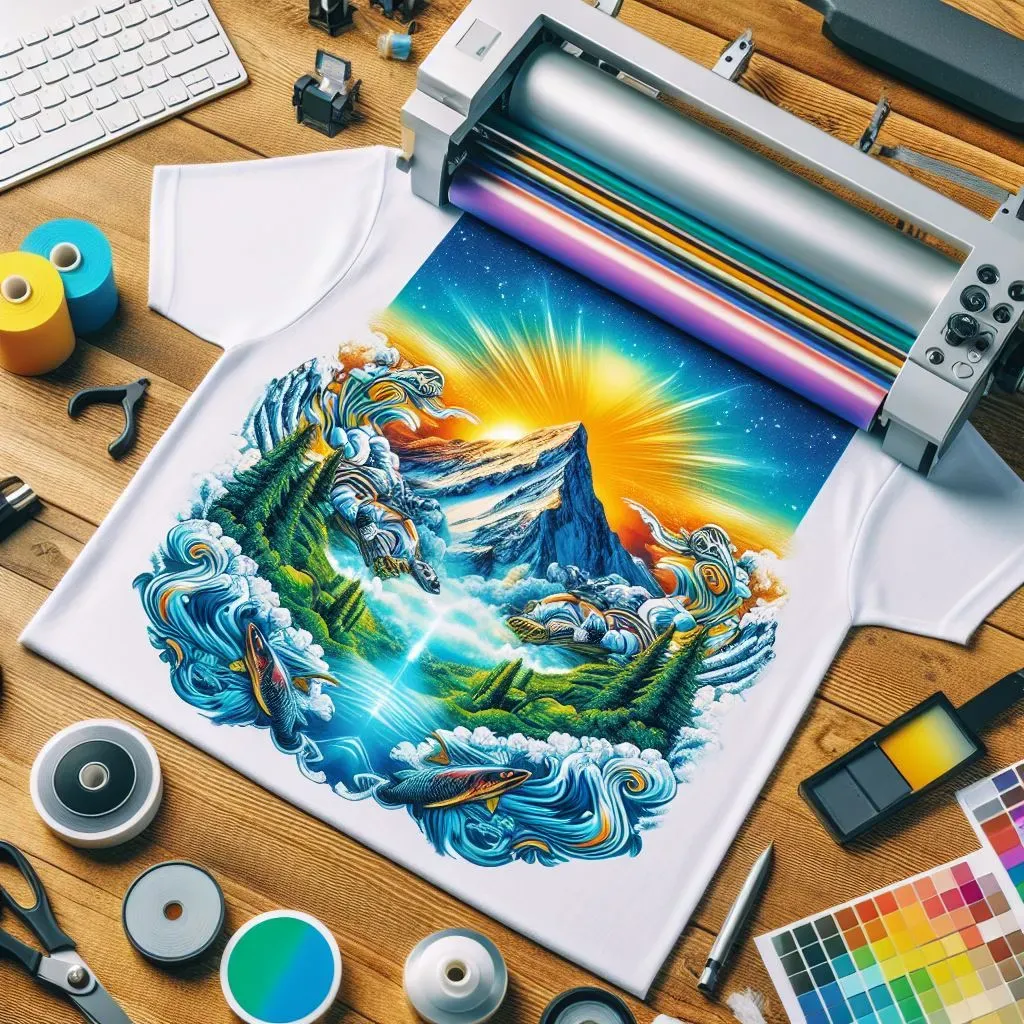
When it comes to enhancing your custom apparel business, recognizing the **common mistakes to avoid when using DTF transfers** is essential for success. Many newcomers often overlook critical aspects, leading to frustrating setbacks such as poor quality DTF films, ink compatibility issues, and improper heat press settings. By identifying these common errors ahead of time, you can streamline your process and ensure that your designs come out vibrant and durable. In this guide, we will delve into frequent pitfalls encountered in DTF printing, providing practical solutions to elevate your printing projects. Understanding these mistakes will empower you to create high-quality prints that resonate with your audience.
Direct-to-Film (DTF) printing has revolutionized the landscape of textile customization, making it easier for businesses to produce eye-catching designs. However, without a solid grasp of the potential pitfalls, such as mismanaged heat press settings or inadequate pre-treatment of fabrics, achieving optimal results can be challenging. This article will explore various printing errors that can severely impact the final outcome, focusing on the necessity of using high-quality materials and compatible inks. By addressing these common issues, you can unlock the full potential of DTF technology and ensure that your printed apparel meets the highest quality standards. Let’s explore the best practices to avoid these frequent mistakes for a seamless printing experience.
Understanding DTF Printing Mistakes
In direct-to-film (DTF) printing, minor missteps can lead to significant quality issues. One of the primary mistakes beginners make is underestimating the importance of using high-grade DTF films. Poor quality films not only compromise the vibrance of the colors but also diminish the durability of the prints. If the film prematurely fades or the designs peel away after the first wash, it can result in customer dissatisfaction and wastage of resources. Therefore, investing in quality films from credible suppliers is a vital step to achieving the best results.
Moreover, it’s essential to grasp the technical aspects of DTF printing. Many new users overlook printer setup, which can lead to ink blending issues and incorrect media output. Regular maintenance and adjustments are key. Familiarizing yourself with the printer specifications can greatly reduce the potential for unsatisfactory outcomes.
The Impact of Heat Press Settings on DTF Transfers
Heat press settings are crucial in the DTF transfer process, as incorrect temperature or pressure can cause irreversible damage to both the film and fabric. A common mistake is either pressing at too high a temperature or insufficient pressure, which may result in uneven transfers or incomplete adhesion. Achieving the right setting requires understanding the specifications provided with the transfer materials and testing them out to optimize the printing process.
Performing test presses before moving on to full production is a critical step that cannot be ignored. This practice helps identify the ideal heat settings and pressure needed, ensuring every design adheres properly and maintains its quality through wear. Consistency in heat press settings contributes significantly to the overall success of the DTF process.
Ensuring Ink Compatibility in DTF Printing
Using the right ink is essential when executing DTF transfers. Many newcomers mistakenly utilize incompatible inks, which leads to issues like fading or poor adhesion on fabrics. Water-based inks are generally preferred due to their performance characteristics with DTF films. They create a stronger bond with the transfer film, ensuring a more durable result. Always check with suppliers to guarantee that the inks used are specifically designed for DTF applications.
Before starting a project, it’s wise to conduct research on ink types and their suitability for various fabrics. By eliminating compatibility issues, you can enhance the quality of prints, leading to more satisfied customers and successful outcomes in your printing endeavors.
Importance of Fabric Pre-Treatment for DTF Transfers
Pre-treatment of fabrics is a critical step in the DTF printing process that is often overlooked. Skipping this crucial step can lead to excessive lifting of transfers during washing or dull designs. Different fabrics require various pre-treatment solutions to optimize adhesion. For instance, cotton fabrics might need specific pre-treatments that differ from synthetic blends. Taking the time to properly pre-treat your fabric directly influences the success of the transfer.
Additionally, understanding the pre-treatment process can greatly improve the final appearance of your prints. Inadequate pre-treatment can result in uneven surfaces that affect the adherence of the DTF films. Ensure that you follow instructions and adjust your pre-treatment methods based on fabric type for the best results.
Avoiding Skipped Test Prints in DTF Workflows
Always performing a test print before commencing with full production is one practice that can save time and resources in DTF printing. Many novices tend to skip this step, believing they can execute a flawless print on the first try, which is a dangerous assumption. A test print helps verify the design’s quality, color accuracy, and overall outcome, allowing for any necessary adjustments before printing in bulk.
Incorporating test prints into your workflow not only ensures that there’s a perfect alignment but also that the material interactions are anticipated. Many issues related to ink compatibility, heat settings, or film quality can be identified and rectified early in the process, thereby enhancing the overall quality of the final product.
Adhering to Post-Curing Instructions for Lasting DTF Transfers
Neglecting post-curing instructions can lead to a statistical increase in transfer failures post-completion. After a DTF transfer is made, allowing for a crucial curing cycle significantly contributes to the durability and vibrance of the design. Ensuring that the transfers are correctly cured leads to better retention during washes and increases the lifespan of the designs.
It is important to follow manufacturer guidelines for post-curing to unify the bond between the ink and the fabric. Ignoring these steps can result in peeling or fading. Proper attention to post-curing can greatly enhance customer satisfaction, and ultimately, the quality of your prints, ensuring they survive wear and maintain their original vibrancy.
Frequently Asked Questions
What are the common mistakes to avoid when using DTF transfers?
Common mistakes to avoid when using DTF transfers include using poor quality DTF films, inadequate printer setup, and ink compatibility issues. Each of these factors can greatly affect the quality of your final prints.
How does poor quality DTF films affect the printing process?
Using poor quality DTF films can lead to fading, peeling, and cracking of designs. It’s crucial to source high-quality DTF films from reputable suppliers to ensure vibrant colors and durable transfers.
Why is it important to check heat press settings when using DTF transfers?
Correct heat press settings—temperature and pressure—are vital to achieving a successful DTF transfer. Incorrect settings can ruin the transfer, so always double-check and conduct test presses to find optimal settings.
What pre-treatment mistakes should I avoid when using DTF transfers?
Failing to properly pre-treat fabrics can result in poor adhesion of DTF transfers. Be sure to use the right pre-treatment solution based on the fabric type to enhance color vibrancy and durability.
How can I ensure ink compatibility for DTF printing?
To avoid ink compatibility issues in DTF printing, always use high-quality, water-based inks specifically designed for DTF. Conduct research or consult with suppliers for the best ink options.
Why is running a test print essential in the DTF transfer process?
Running a test print is essential as it helps identify and rectify potential issues before large batch production. Skipping this step can lead to costly mistakes, so always test for quality and accuracy.
| Mistake | Description | Solution |
|---|---|---|
| Poor Quality Film | Using low-quality films can lead to fading, peeling, and cracking of prints. | Purchase films from reputable suppliers; look for well-reviewed products. |
| Inadequate Printer Setup | Incorrect printer configurations can lead to poor print quality. | Regularly maintain the printer and check settings before printing. |
| Ink Compatibility Issues | Incompatible inks can result in poor adhesion and prints. | Use high-quality, compatible inks designed for DTF printing. |
| Pre-Treatment Mistakes | Improper pre-treatment leads to poor transfer adhesion. | Follow guidelines for pre-treating fabrics specific to their type. |
| Heat Pressing Errors | Incorrect temperature and pressure can ruin transfers. | Double-check heat press settings against specifications and perform test presses. |
| Skipping the Test Print | Not running a test print can lead to avoidable mistakes. | Always perform a test print to check design quality before large runs. |
| Ignoring Post-Curing Instructions | Neglecting post-curing can lead to fragile transfers. | Follow post-curing instructions carefully for durability. |
Summary
Common mistakes to avoid when using DTF transfers can significantly impact the quality and longevity of your custom apparel prints. It is essential to be mindful of factors such as selecting poor quality films, neglecting proper printer configurations, and ignoring the importance of compatible inks. Ensuring thorough pre-treatment of fabrics and adhering to precise heat press settings are critical steps often overlooked. Additionally, performing a test print before full production and following post-curing instructions can protect your investments. By paying attention to these details, you will improve the outcome of your DTF prints and achieve impressive results in your projects.





